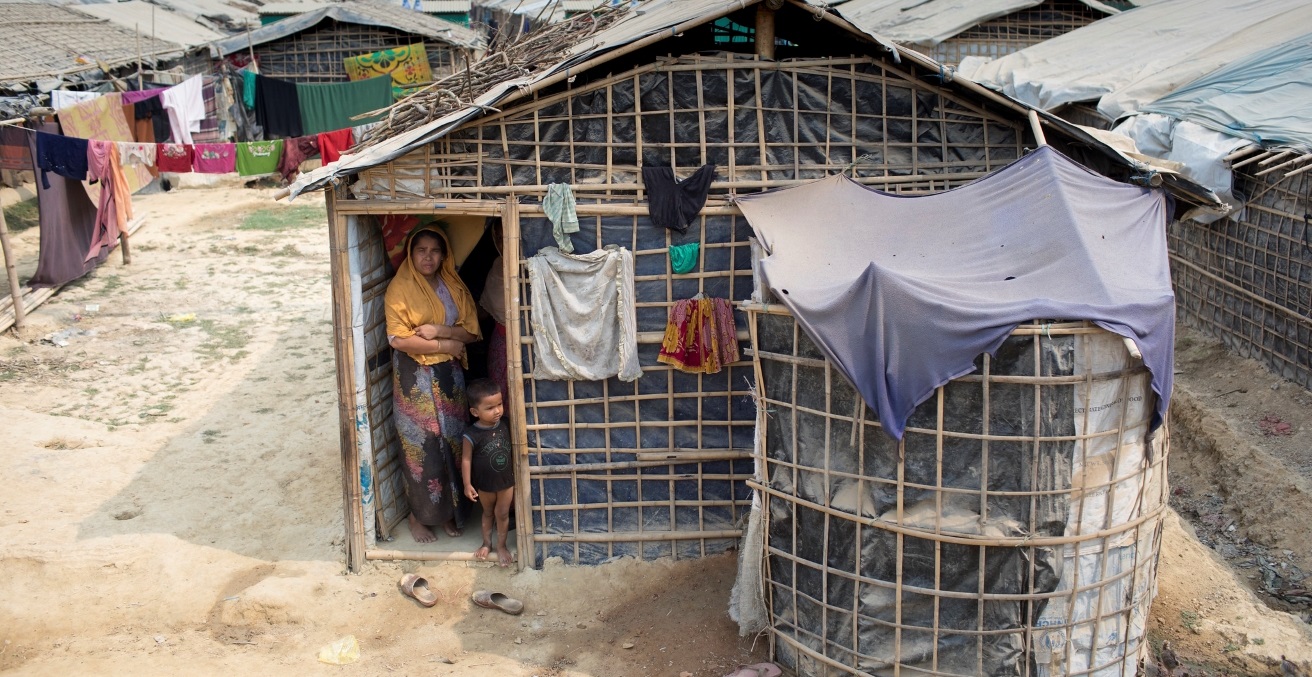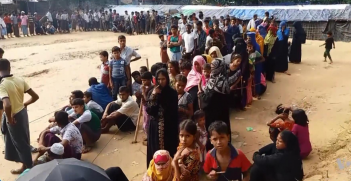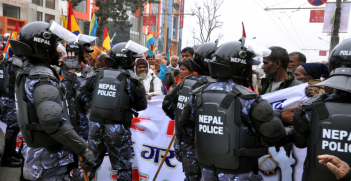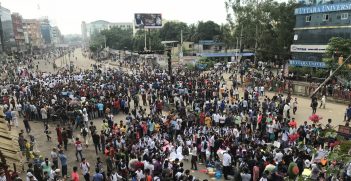Bangladesh Plans to Relocate 100,000 Rohingya to Bhasan Char Island

Bangladesh has invested hundreds of millions of dollars to relocate Rohingya refugees from Cox’s Bazaar to Bhasan Char Island in the Bay of Bengal. It remains to be seen whether this relocation will be forced or voluntary.
The most persecuted people in the world, the Rohingya have been driven out from their country by different military clearance operations and, most recently, a genocide in 2017. About 1.2 million Rohingya people have been living in two camps spread over just 26 square kilometers of land in Cox’s Bazaar, Bangladesh. They are living in extremely precarious conditions in the camps, which are overpopulated, chaotic, clumsy, and sprawling. Newer houses in the camp are made of plastic sheets and bamboo sticks, while those who came in Bangladesh before 2017 live in clay mud homes. Rain and storms are the biggest threat to their houses. Six to seven people typically live in each tiny family dwelling, and than 20 people share a toilet. Refugees must queue to use the toilet, bathe, and cook. Many Rohingya, especially women, are told that they should not to use the toilet at night. The camps are in hilly areas, and the destruction of local forests has increased the number of landslides in the area. According to a UN report, about 100,000 refugees are at risk from floods and landslides.
Bangladesh initially welcomed the Rohingya refugees, but the situation has become unmanageable following an unexpected massive flow of refugees in 2017. Now, Bangladesh sees the Rohingya population as a security threat. When more than 200,000 Rohingya gathered for Genocide Remembrance Day in the Kutupalong camp in Cox’s Bazar on 25 August 2019 without getting permission from Bangladeshi authorities, Bangladesh suspended the senior officials of the Rohingya Refugee Repatriation Commission for their failure to stop the gathering. After that, the Bangladeshi government became more vigilant about security and unexpected revolutionary activities in the camps. Further, the local population of Ukhiya and Teknaf in Cox’s Bazaar is about 500,000, while the refugee population is 1.2 million. This demographic imbalance is seen as a security threat for the region, especially since at least seven people, including two local Bangladeshis, were killed on 6-7 October 2020 in clashes between two groups of Rohingyas who were proclaiming dominance in the Ukhiya camp. All NGO workers were withdrawn from the camp immediately following the incident. As such, the Bangladeshi government would prefer to spread the Rohingya population out instead of having them all living in a single place.
The government of Bangladesh plans to relocate 100,000 Rohingya people from Cox’s Bazar camps to the island of Bhasan Char, known as “Tengar Char” or the “Floating Island,” 30 kilometres away from the mainland. The Bangladeshi government has invested $272 million to accommodate relocated Rohingya people. The infrastructure project includes housing, solar power, healthcare, communications, a storm surge embankment, cyclone shelter centres, and other facilities. Each cluster of homes on the island is designed with a courtyard and a pond. The architect of this project calls it a “paradise” for the Rohingya, in comparison to the Cox’s Bazar camps where they are living now.
However, the UN and the Rohingya people are not convinced about relocation to an uninhabited island. Meanwhile, many local Bangladeshis who lost their homes due to river erosion have demanded that they be relocated to Bhasan Char instead of Rohingya. Cyclones and floods are the prominent causes of fear for relocation of the Rohingya people. Bangladeshi officials claim there is no reason to fear floods since the houses on the island have been built more than a meter above the ground with concrete blocks and are protected by a 13-kilometer-long flood embankment.
The government recently organised a three-day tour of Bhasan Char called “Go and See” for 40 Rohingya leaders and their family members. The Rohingyas were pleased to see the houses and facilities, especially the ponds, but upon returning, they expressed their worries about safety during the monsoon season. The Bangladeshi government accused NGOs, including the UN High Commissioner for Refugees, of discouraging the Rohingya people from relocating to Bhasan Char. Bangladeshi Foreign Minister Abul Momen claimed that the “Rohingyas are coming up with problems. Again, and again local people are getting killed. We cannot allow that. We need to maintain law and order. To do that, maybe we will force them to Bhasan Char.”
It would be nice to believe that because the Bangladeshi government invested hundreds of millions of dollars in this relocation project, it undertook the necessary feasibility tests and took measures to mitigate environmental disasters. The Bangladeshi government and the UN should work together to run another feasibility study instead of resorting to the forced relocation of vulnerable Rohingya refugees.
Iqthyer Zahed is a PhD researcher of the School of Humanities, Arts & Social Sciences of University of New England, Australia. He was educated at Anglia Ruskin University, United Kingdom & the University of Chittagong, Bangladesh. He has published several research articles in international peer-reviewed journals.
This article is published under a Creative Commons License and may be republished with attribution.





